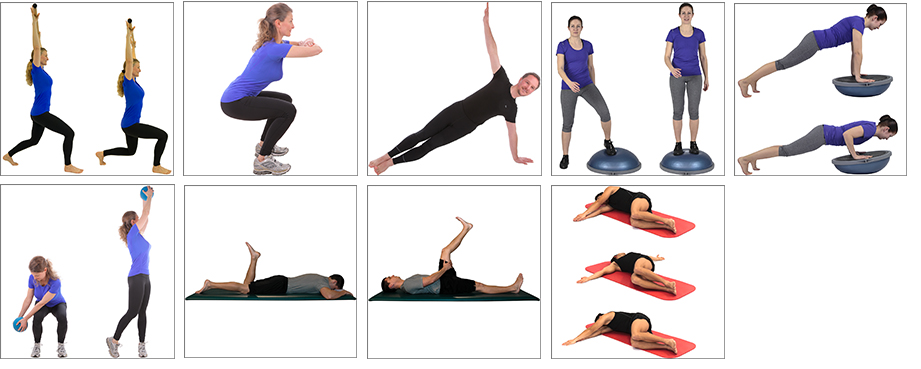
Back complaints are a significant public health problem in adulthood, resulting in a substantial economic burden. In Finland in 2016, it was reported that spinal diseases cost approximately 103 million euros of subsistence allowance1. However, back problems are also common in adolescent populations2.
In a recent Danish study, in early adolescence the lifetime prevalence of any spinal pain (neck, mid back or low back) has been reported to be 86% 3. Mostly the pain intensity has been reported to be relatively low and infrequent in nature, but there is one group of adolescents (20 % of the study participants) who reported frequent and moderate to high intensity back pain3 . In the same cohort, the two-year incidence for LBP was 42%, meaning that nearly half of the adolescents reported new back complaints during the two-year follow-up. Furthermore, the results have indicated that the prevalence of spinal pain increases with aging and concern is that pain is often reported in more than one location3 4. In addition, pain spreading to several locations is often associated with more intense LBP5 6. Back pain, at least in later adolescence, has been reported to often predict persistent back pain in adulthood7 and this should underline the importance of prevention of LBP already in early adolescence and childhood.
Physical Activity and Back Pain in Adolescents
Physical activity (PA) is often promoted as prevention for back pain, but how much physical activity is best? One cannot say categorically that physical activity is good or bad for your back. Previous research has proposed that the association between back complaints and physical activity could be U-shaped, however findings from all studies do not correspond.
The differences between findings might be due to using different criteria for measuring physical activity. For example, in a cross-sectional study, self-reported physical activity (questionnaire) was associated with back complaints, but no association was found when using an objective measure (accelerometer)8.
Results from a recent prospective cohort study from Denmark indicated that young adolescents who are physically very active (highest 10%), have increased likelihood of developing back pain. They also concluded that moderate-to-vigorous physical activity as well as inactivity does not increase the risk of suffering spinal pain, at least during the two-year follow-up9. Another study group found that high levels of objectively measured physical activity in childhood could reduce the likelihood of back complaints in early adolescence10.
The difference between studies investigating the association between high levels of physical activity and back complaints might also be explained by different levels of maturation. It could be speculated that younger children can benefit from high levels of physical activity, but in early adolescence, as puberty begins, overuse types of back problems can arise from excess load. However, this is just conjecture.
Prevention of Back Complaints in Adolescents
After having a quick browse, it seems as if the evidence on prevention and management of back complaints in youth is lacking11. While we wait for more RCTs on prevention of back complaints in adolescents, we will have to use our knowledge on effective measures in the adult population.
It has been suggested that a combination of exercise and education may be effective in decreasing the prevalence of back pain in adults and maybe therefore also in youth11. In addition, exercise focusing on lumbar movement control and counselling have shown promise in reducing more severe back complaints in young adults12. It is unlikely that ergonomic programmes or education alone would be effective in preventing back complaints13 even though it has been noted that educational back care promotion programmes in childhood and early adolescence can result in “long-term knowledge” of principles of back care14. However, this knowledge might not result in a change in actual behaviour, at least in the long-term14.
A Program including daily exercises, in addition to educational content, has been conducted in youth populations, however the adherence to the program was poor. Based on this study, we could conclude, at least, that some effective motivational features should be incorporated into back pain prevention programmes aimed at children and adolescents. For example, in late adolescence, live feedback has been shown to be an effective way to improve objectively monitored adherence to exercises prescribed due to patellofemoral pain16 . Another motivational feature to try could be, for example, gamifying the program in some way. For instance, PhysioTools’ PT Momentum app offers a gamifying element, where the user tries to achieve and maintain as high a PT Momentum value as possible. High PT Momentum means the user has been actively using the prescribed program, i.e the adherence can be monitored.
As psychosocial factors have been shown to be associated with LBP17, it should be taken into account, that a purely biomedical and/or biomechanical starting point in LBP prevention and management is likely to fail, as is an intervention that is not individualised18. With PhysioTools individual programs can be drawn together and personalised advice leaflets left behind.
We would like to hear how you have tried to tackle the issue of low adherence to exercises in adolescents and children. What are your favourite exercises for your younger clients with back complaints? If you are interested in a scientific investigation of how PT Momentum could affect the adherence to exercise in younger clients, do contact us.
To conclude, we would like to present you with a template program that is modified from the study by Suni et al. 12 just to give some ideas of an evidence-based program.
Remember that, as with all PhysioTools exercise programs, this can be tailored to an individual’s needs and situation, allowing for the appropriate management of LBP.
Request PhysioTools monthly newsletter
References
- Statistical yearbook of the social insurance institution 2013. kansaneläkelaitos – the social insurance institution of finland. 2016. https://helda.helsinki.fi/bitstream/handle/10138/228883/Kelan_tilastollinen_vuosikirja_2016.pdf. Accessed 20.6.2018
- Calvo-Munoz I, Gomez-Conesa A, Sanchez-Meca J. Prevalence of low back pain in children and adolescents: A meta-analysis. BMC Pediatrics. 2013;13:14.
- Aartun E, Hartvigsen J, Wedderkopp N, Hestbaek L. Spinal pain in adolescents: Prevalence, incidence, and course: A school-based two-year prospective cohort study in 1,300 danes aged 11–13. BMC Musculoskeletal Disorders. 2014;15:187.
- Ståhl M, El-Metwally A, Rimpelä A. Time trends in single versus concomitant neck and back pain in finnish adolescents: Results from national cross-sectional surveys from 1991 to 2011. BMC Musculoskelet Disord. 2014;15.
- Wirth B, Humphreys BK. Pain characteristics of adolescent spinal pain. BMC pediatrics. 2015;15(1):42. http://www.ncbi.nlm.nih.gov/pubmed/25886130. doi: 10.1186/s12887-015-0344-5.
- Pellisé F, Balagué F, Rajmil L, et al. Prevalence of low back pain and its effect on health-related quality of life in adolescents. Archives of Pediatrics & Adolescent Medicine. 2009;163(1):65-71. http://dx.doi.org/10.1001/archpediatrics.2008.512. doi: 10.1001/archpediatrics.2008.512.
- Hestbaek LDC, Leboeuf-Yde C, Kyvik KO, Manniche, C D M S. The course of low back pain from adolescence to adulthood: Eight-year follow-up of 9600 twins. Spine. 2006;31.
- Wedderkopp N, Leboeuf-Yde C, Bo Andersen L, Froberg K, Steen Hansen H. Back pain in children: No association with objectively measured level of physical activity. Spine. 2003;28(17):2019-2024. http://www.ncbi.nlm.nih.gov/pubmed/12973151. doi: 10.1097/01.BRS.0000083238.78155.31.
- Ellen Aartun, Eleanor Boyle, Jan Hartvigsen, et al. The most physically active danish adolescents are at increased risk for developing spinal pain: A two-year prospective cohort study. BMJ Open Sport & Exercise Medicine. 2016;2. https://search.proquest.com/docview/1792533680. doi: 10.1136/bmjsem-2015-000097.
- Wedderkopp N, Kjaer P, Hestbaek L, Korsholm L, Leboeuf-Yde C. High-level physical activity in childhood seems to protect against low back pain in early adolescence. Spine J. 2009;9.
- Kamper SJ, Yamato TP, Williams CM. The prevalence, risk factors, prognosis and treatment for back pain in children and adolescents: An overview of systematic reviews. Best Practice & Research Clinical Rheumatology. . http://www.sciencedirect.com/science/article/pii/S1521694217300037. doi: 10.1016/j.berh.2017.04.003.
- Suni JH, Taanila H, Mattila VM, et al. Neuromuscular exercise and counseling decrease absenteeism due to low back pain in young conscripts: A randomized, population-based primary prevention study. Spine. 2013;38(5):375. http://www.ncbi.nlm.nih.gov/pubmed/22941095. doi: 10.1097/BRS.0b013e318270a12d.
- Saragiotto BT, Latimer J. Prevention of low back pain (PEDro synthesis). British Journal of Sports Medicine. 2016;50(21):1345. https://search.proquest.com/docview/1834889706. doi: 10.1136/bjsports-2016-096182.
- Dolphens M, Cagnie B, Danneels L, De Clercq D, De Bourdeaudhuij I, Cardon G. Long-term effectiveness of a back education programme in elementary schoolchildren: An 8-year follow-up study. Eur Spine J. 2011;20(12):2134-2142. http://www.ncbi.nlm.nih.gov/pubmed/21647724. doi: 10.1007/s00586-011-1856-9.
- Hill JJ, Keating JL. Daily exercises and education for preventing low back pain in children: Cluster randomized controlled trial. Physical therapy. 2015;95(4):507-516. http://www.ncbi.nlm.nih.gov/pubmed/25504487. doi: 10.2522/ptj.20140273.
- Riel H, Matthews M, Vicenzino B, Bandholm T, Thorborg K, Rathleff MS. Efficacy of live feedback to improve objectively monitored compliance to prescribed, home-based, exercise therapy-dosage in 15 to 19 year old adolescents with patellofemoral pain- a study protocol of a randomized controlled superiority trial (the XRCISE-AS-INSTRUcted-1 trial). BMC musculoskeletal disorders. 2016;17(1):242. http://www.ncbi.nlm.nih.gov/pubmed/27250984. doi: 10.1186/s12891-016-1103-y.
- Vikat A, Rimpelä M, Salminen JJ, Rimpelä A, Savolainen A, Virtanen SM. Neck or shoulder pain and low back pain in finnish adolescents. Scand J Public Health. 2000;28.
- Falla D, Hodges PW. Individualized exercise interventions for spinal pain. Exercise and Sport Sciences Reviews. 2017:1. doi: 10.1249/JES.0000000000000103.

No comments:
Post a Comment